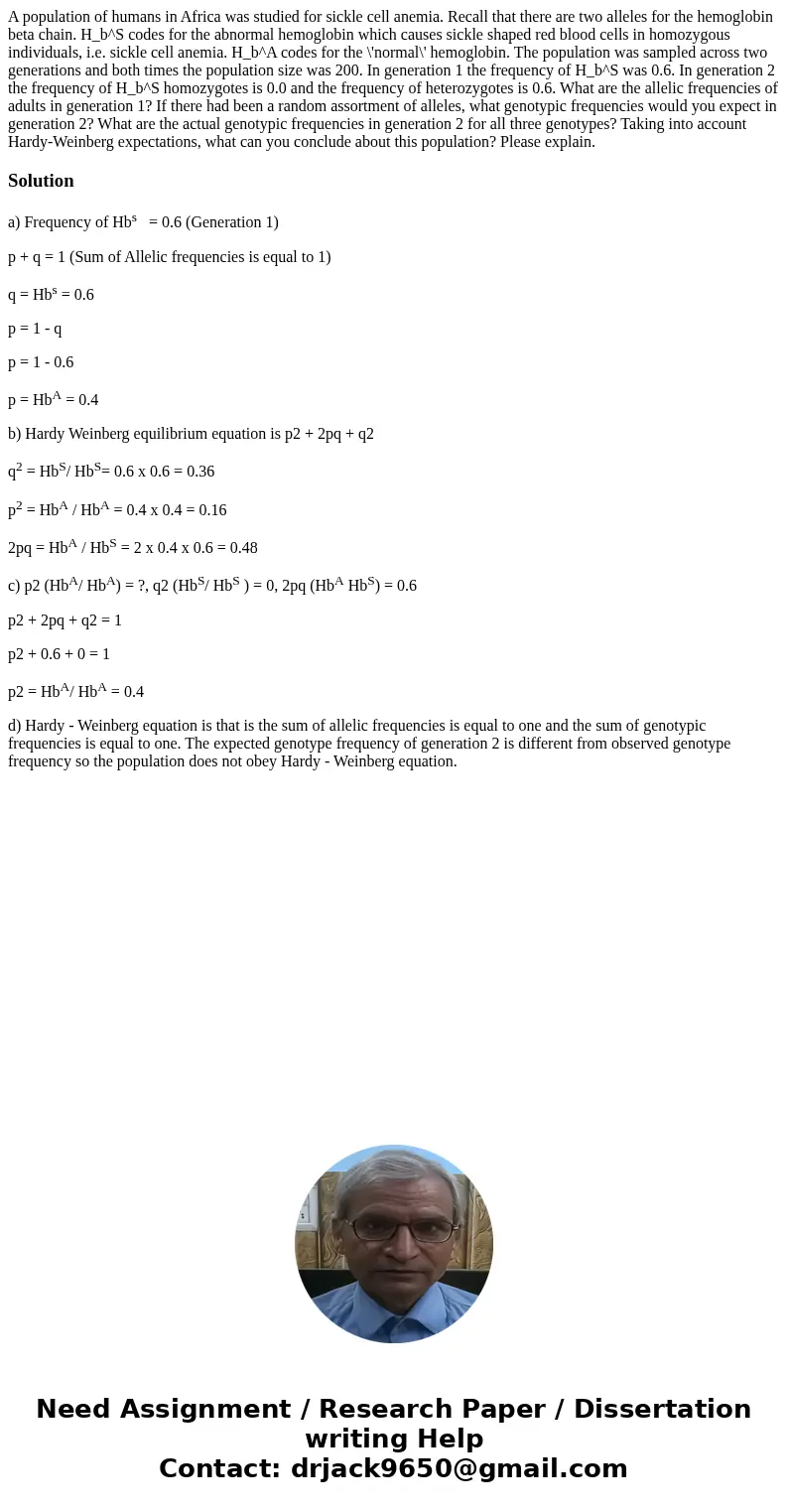A population of humans in Africa was studied for sickle cell
A population of humans in Africa was studied for sickle cell anemia. Recall that there are two alleles for the hemoglobin beta chain. H_b^S codes for the abnormal hemoglobin which causes sickle shaped red blood cells in homozygous individuals, i.e. sickle cell anemia. H_b^A codes for the \'normal\' hemoglobin. The population was sampled across two generations and both times the population size was 200. In generation 1 the frequency of H_b^S was 0.6. In generation 2 the frequency of H_b^S homozygotes is 0.0 and the frequency of heterozygotes is 0.6. What are the allelic frequencies of adults in generation 1? If there had been a random assortment of alleles, what genotypic frequencies would you expect in generation 2? What are the actual genotypic frequencies in generation 2 for all three genotypes? Taking into account Hardy-Weinberg expectations, what can you conclude about this population? Please explain.
Solution
a) Frequency of Hbs = 0.6 (Generation 1)
p + q = 1 (Sum of Allelic frequencies is equal to 1)
q = Hbs = 0.6
p = 1 - q
p = 1 - 0.6
p = HbA = 0.4
b) Hardy Weinberg equilibrium equation is p2 + 2pq + q2
q2 = HbS/ HbS= 0.6 x 0.6 = 0.36
p2 = HbA / HbA = 0.4 x 0.4 = 0.16
2pq = HbA / HbS = 2 x 0.4 x 0.6 = 0.48
c) p2 (HbA/ HbA) = ?, q2 (HbS/ HbS ) = 0, 2pq (HbA HbS) = 0.6
p2 + 2pq + q2 = 1
p2 + 0.6 + 0 = 1
p2 = HbA/ HbA = 0.4
d) Hardy - Weinberg equation is that is the sum of allelic frequencies is equal to one and the sum of genotypic frequencies is equal to one. The expected genotype frequency of generation 2 is different from observed genotype frequency so the population does not obey Hardy - Weinberg equation.

 Homework Sourse
Homework Sourse